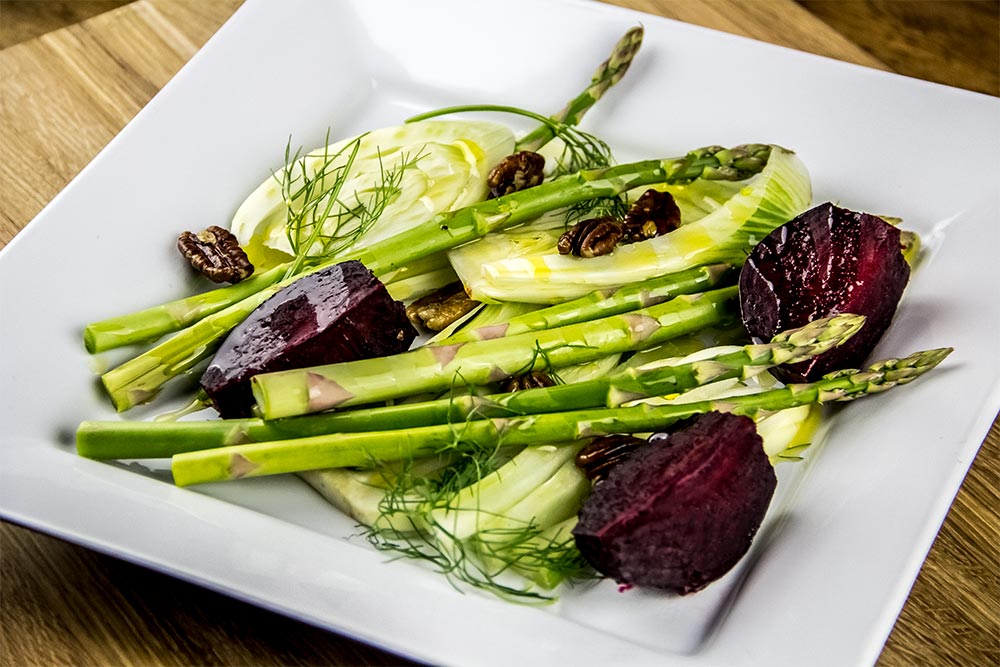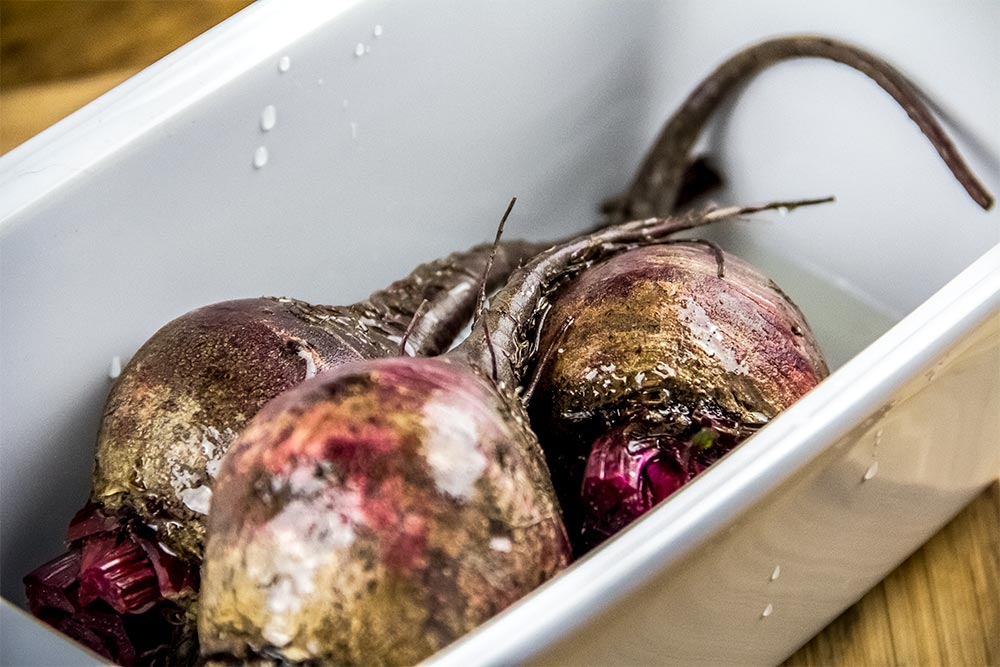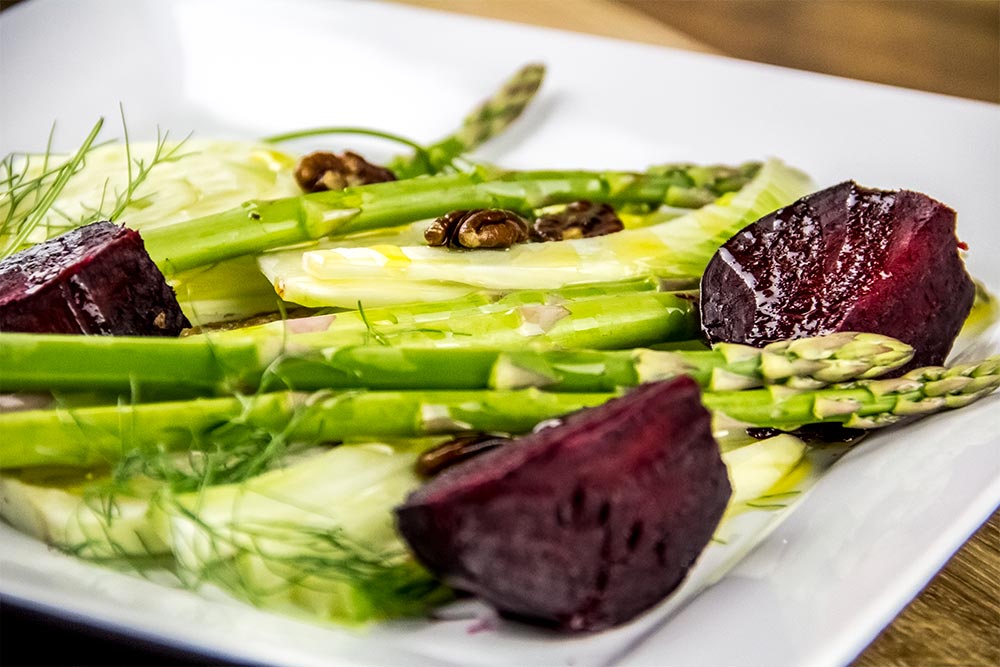I have to admit, this is a great looking dish. Not only is it that, but it’s also very interesting. I learned a lot by looking up what certain ingredients were and what their histories are. What I found was definitely worth the effort.
Did you know that verjus’ (verjuice) popularity dates back to medieval times? Today, it’s a go-to ingredient for many French dishes and recipes that call for a sour sauce. Verjus is a highly acidic juice that is created by pressing unripe grapes. If you’ve ever bitten into an unripe grape (like I have), you know how odd tasting it can be. Verjus also sometimes includes crab-apples and other fruits on the sour side. It’s used in condiments, sauces and for other purposes where preparations need deglazing. It’s pretty cool, if I don’t say so myself. It’s one of those ingredients that folks “in the know” use, but that the rest of us don’t take advantage of nearly enough.
Anyway, in the recipe I share below, verjus is used and boy does it make a difference. It’s truly the star of the show.

The Recipe
The photo above may be somewhat misleading, depending on what the characteristics of your vegetables are. The point of this salad is to eat something that’s tender and flavorful. If you’ve got pencil thin asparagus, that’s fine. Keep them that way. If you’ve got thicker asparagus, like the ones you see above, you may want to slice them very thinly or shave them with a potato peeler. Also, to get very enjoyable fennel, you can use a mandolin or if your knife skills are up to par, slice as thinly as humanly possible.
This is a great tasting salad. The unique vegetable combination mixed with the toasted pecans, verjus and roasted beets makes for something memorable. It’s surely not your every day starter, so plan to prepare it for an occasion. That’s my advice anyway.
Ingredients
Serves: 4
3 Beets
Regular Olive Oil
1 1/3 Cups Verjus
4 Tablespoons Extra-Virgin Olive Oil
Regular Salt
Ground Black Pepper
6 Ounces Asparagus, Sliced Thin
1 Fennel Bulb, Halved and Sliced Thin
1/4 Cup Pecans, Toasted Lightly
Fennel Fronds for Garnish
Step-by-Step Instructions
I’d like to thank Yotam Ottolenghi and his cookbook called Plenty – Vibrant Vegetable Recipes From London’s Ottolenghi for this recipe. I may have changed up a few very minor details, but really, this is all his recipe, so thank you.
Pre-Heat Your Oven
Arrange your oven racks so one of them is in the center position and turn the heat on to 400 degrees.
Roast the Beets
If you’ve been following this blog, you know that we’ve been down this road before. To roast the beets, cut off the stalks. Then, coat each one with regular olive oil and a sprinkle of salt and pepper. Place them into an oven-safe bowl and cover that bowl with aluminium foil. Cook for 45 minutes.

After the cook time, stick a fork in a beet. If it goes in and if it feel tender, they’re finished. Remove them from the oven and trim both ends from each one. Then, slice into quarters. Unless the skin is very thick and tough, there’s no need to remove it.
Prepare the Verjus
In a small saucepan, add the verjus. Then, over medium-low heat, bring the liquid to a simmer. Reduce the verjus to 3 tablespoons and then transfer to a medium sized bowl. Add in the extra-virgin olive oil, 1/4 teaspoon salt and 1/4 teaspoon pepper. Whisk well and set aside.
Plate the Ingredients
On a plate, arrange the raw asparagus, fennel and roasted beets. Then, sprinkle some toasted pecans over each plate and drizzle some verjus over each one as well. Finally, add the garnish.
The Final Salad
If it wasn’t for the roasting of the beets and the reducing of the verjus, this salad would have taken no time to prepare. But even then, it was pretty simple. Keep this recipe in your back pocket because the flavor really pops and I think you’ll get a good response. Thanks for reading!


Leave a Reply